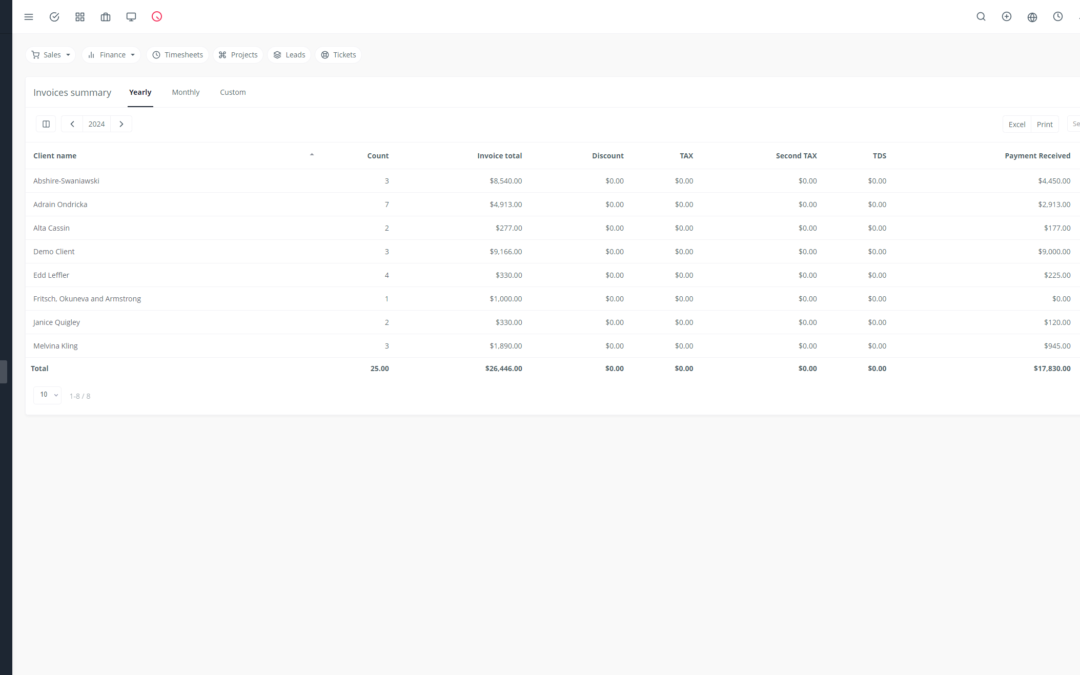In today’s world, businesses are constantly seeking solutions to optimize their operations and improve customer relationships. To achieve this, three types of software prove essential: CRM, ERP, and GRC. But what are their differences, points of convergence, and benefits?
1. CRM: The Heart of Customer Relationships ❤️
Definition: CRM, short for Customer Relationship Management, refers to software that enables businesses to manage and improve interactions with their customers.
Main Objective: CRM aims to centralize customer information, automate marketing and sales tasks, and personalize the customer experience for improved loyalty.
Key Features:
Contact and opportunity management
Customer segmentation and targeting
Marketing campaign automation
Sales and customer service management
Performance analysis and reporting
Examples of Use:
Send personalized newsletters to your customers.
Track your sales progress and identify opportunities.
Respond quickly to customer inquiries through live chat.
2. ERP: The Brain of Your Operations 🧠
Definition: ERP, short for Enterprise Resource Planning, refers to software that integrates and automates a company’s business processes.
Main Objective: ERP centralizes business information, simplifies processes, and improves collaboration between teams.
Key Features:
Inventory and purchasing management
Production and supply chain management
Finance and accounting management
Human resources and payroll management
Examples of Use:
Order raw materials in real time based on production needs.
Track company expenses and generate financial reports.
Manage employee salaries and leave requests.
3. GRC: Security and Compliance at the Heart of Your Strategy 🛡️
Definition: GRC, short for Governance, Risk, and Compliance, refers to software that helps manage risks and ensure compliance with applicable regulations.
Main Objective: GRC assists businesses in identifying, analyzing, and managing risks while ensuring regulatory compliance.
Key Features:
Risk and opportunity management
Regulatory compliance management
Audit and control management
Incident and crisis management
Examples of Use:
Identify risks associated with a new regulation.
Implement controls to prevent fraud.
Manage security incidents and crises.
4. Differences and Convergences between CRM, ERP, and GRC
CRM vs. ERP:
Differences:
CRM focuses on customer relationships, while ERP focuses on the company’s internal processes.
CRM is typically used by marketing and sales teams, while ERP is used by finance, operations, and HR teams.
Convergences:
CRM customer data can be used by ERP to optimize production or shipping processes.
CRM and ERP can integrate to provide a complete overview of the company.
CRM vs. GRC:
Differences:
CRM focuses on customer interactions, while GRC focuses on risk management and compliance.
CRM is used by marketing and sales teams, while GRC is used by legal, security, and compliance teams.
Convergences:
CRM can help identify risks related to customer satisfaction.
GRC can help ensure compliance of customer data and sales processes.
ERP vs. GRC:
Differences:
ERP focuses on managing internal processes, while GRC focuses on risk management and compliance.
ERP is used by operational and financial teams, while GRC is used by legal, security, and compliance teams.
Convergences:
GRC can help identify risks related to internal processes managed by ERP.
ERP can provide essential data for risk and compliance management.
5. Integrating CRM, ERP, and GRC Systems: A Major Advantage 💪
Integrating CRM, ERP, and GRC systems improves team collaboration, centralizes information, and optimizes business processes.
Benefits of Integration:
Complete company overview: Real-time access to all key information, regardless of team.
Improved collaboration: Enhanced communication and information sharing among different departments.
Process automation: Reduction in manual tasks and improved efficiency.
Enhanced decision-making: More comprehensive and accurate data for informed decisions.
Cost and risk reduction:* Process and resource optimization, and better risk management.
In conclusion, CRM, ERP, and GRC systems are essential tools for your business performance. By using them effectively, you can improve customer relationships, optimize processes, and ensure your organization’s compliance.
Don’t hesitate to choose solutions that integrate seamlessly to take advantage of all the benefits of unified management and shared data. 🤝🚀

